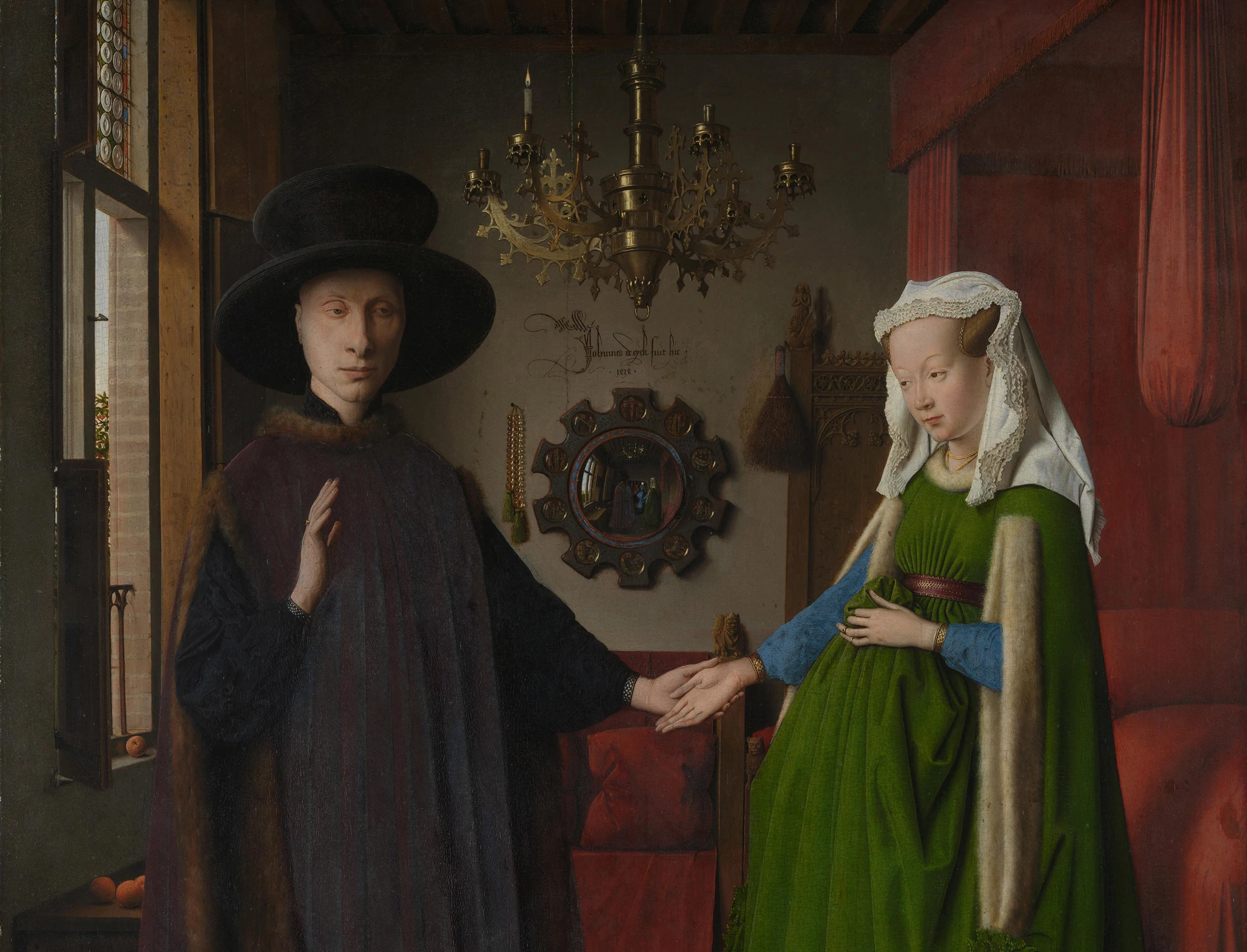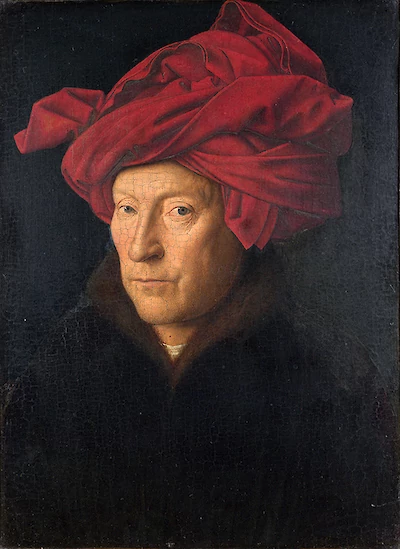Jan Van Eyck
"As well as I can"




In her essay for the Heilbrunn Timeline, historian Susan Jones lauds Jan Van Eyck for his legendary objectivity, and how right she is. Jan Van Eyck appears in history out of nowhere. We don't know his date of birth, his education, or where he learned to paint with the cold precision that made him famous in his time and respected to this day. The first record of his life appears in 1422: a receipt from the Hague for a painting made out to Meyster Jan den malre, Master Jan the painter. By this date, Van Eyck was around 32 years old, considered a master craftsman, and had already pioneered painting in oil, rather than the traditional tempera of the day. His work only grew more famous for its technical refinement and considered symbolism.
After his work for the Hague, Van Eyck moved to Bruges to work in the court of King Philip the Good, and with the backing of the monarch had a long career of profitable commissions, participated in the Tournai painters’ guild, and built an industrious workshop of journeyman painters. With the exception of a few mysterious trips to visit Philip, the Duke of Burgundy, for which Van Eyck was paid multiples of his annual salary, his life was productive and relatively drama-free. Even his personal motto, Als ich kan “As well as I can” is about as practical as you get. The artist died at 51, in Bruges, and was eventually buried inside St. Donatian’s Cathedral.
So why is Jan Van Eyck still taught in nearly every survey of western art history? While his life was workman-like and scarce in detail, his work is so dense with symbolism and quiet nuance it practically begs for analysis. Take a minute and look through his body of work. All traditional themes for the time: religious altarpieces, scenes of Mary and the child Christ, formal portraits of lesser royalty. But given time, the objectivity Susan Jones describes begins to shine through. Van Eyck’s portraits are beyond formal, they are unflinching. Every crease, every pimple is examined. His sitters are rarely beautiful, and he paints them precisely as they are—the dignity of honest treatment.
The other defining feature of Van Eyck’s painting is his nearly obsessive use of symbolism. In the Arnolfini Portrait, a discomforting couple holds hands, and the tension of the scene is reinforced by layer after layer of subtext. The wooden clogs reference a passage from Exodus, the dog is a talisman of a successful marriage, a portrait of St Margaret overlooks the marriage bed invoking fertility, and most telling, the woman’s hand rests in her partner’s left hand, a symbol of a socially unequal marriage. Cold, Van Eyck, cold.
Jan Van Eyck’s work rewards careful examination. It’s not friendly, or kind, but it is very interesting.
...
Got questions, comments or corrections about Jan Van Eyck? Join the conversation in our Discord, and if you enjoy content like this, consider becoming a member for exclusive essays, downloadables, and discounts in the Obelisk Store.